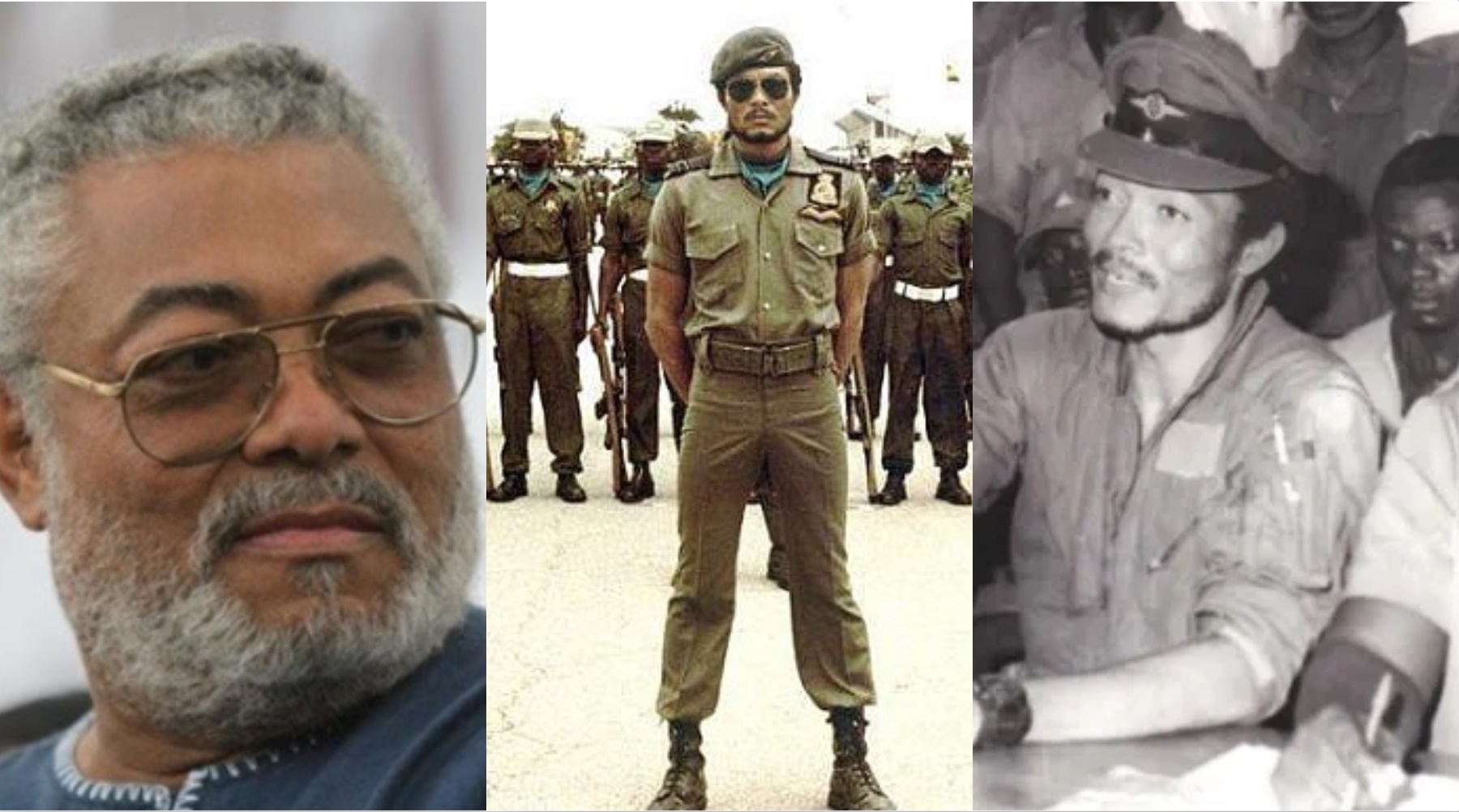June 4th Revolution: A closer look at the real story behind the uprising
- Today in history, then Flight Lieutenant Jerry Rawlings announced a change in government by the Armed Forces Revolutionary Council (AFRC)
- The June 4, 1979 Revolution, better known as June 4th uprising, arose out of corruption, bad governance and frustration among Ghanaians
- YEN.com.gh takes a look at the real historical narrative behind the uprising
Our manifesto: This is what YEN.com.gh believes in
Install our latest app for Android and read the best news about Ghana
Exactly 41 years ago today on June 4, 1979, Flight Lieutenant Jerry Rawlings, announced a change in government by the Armed Forces Revolutionary Council (AFRC).
The June 4th Revolution otherwise known as June 4th Uprising arose out of corruption, bad governance and frustration among Ghanaians.
Ghanaianmuseum.com reports that General I. K. Acheampong led a group of disgruntled army officers and usurped Prime Minister Dr Kofi Abrefa Busia’s government in 1972, and formed a government which they called The Supreme Military Council (SMC).
In 1978, however, General Acheampong was accused of economic mismanagement and forced to resign by a group of army officers led by General Akuffo.
On May 15, 1979, less than five weeks before the national elections, then- Flt. Lt Jerry John Rawlings led a group of junior Ghanaian army officers in an attempted overthrow of the military government of General Fred Akuffo and the Supreme Military Council.
Flt. Lt Jerry John Rawlings was then arrested and imprisoned after the failed coup attempt.
READ ALSO: Nana Akomea: STC boss celebrates pretty wife's b'day with ravishing photos of her

Source: Facebook
On the night of June 3, 1979, a group of junior officers including Major Boakye Djan and enlisted personnel of the Fifth Battalion and the Reconnaissance Regiment in Burma Camp staged a bloody coup and freed Rawlings.
In the early hours of June 4, 1979 at 6 a.m. on Radio Ghana, an announcement was made about the change of government.
The individual who made the announcement later at 7.30 a.m. identified himself as Flight Lieutenant Jerry Rawlings, who was expected in the morning to appear before a court martial at the Burma Camp.
He declared that he and some other ranks had taken over the government and asked officers and men to report to Nicholson Stadium inside Burma Camp where election of officers would take place.
He invited all officers who knew they had nothing to fear to attend the meeting.
Barely an hour and a half later, Major- General N. A. Odartey-Wellington, announced on the air that an uprising which occurred in the early hours had been quelled.
He, therefore, ordered officers and men of the Armed Forces to return to their respective units while steps were being taken to return the Armed Forces to normalcy.
He then invited Flight Lieutenant Jerry Rawlings and his supporters to meet him at the First Infantry Brigade headquarters at Kpeahie Ridge and promised there would be no arrests and victimisation.
The lull which followed this announcement was, however, broken at 3.32 p.m. when a special Radio Ghana announcement said that Flight-Lieutenant Jerry Rawlings and his men had taken over control of the country.
Notable on the day was a display by Major- General N. A. Odartey-Wellington. He entered an armoured car and single-handedly shot for three continuous hours.
When he ran out of cartridges, he dashed to the Nima Police Station to surrender.
Unfortunately, he was killed on the spot by military officers immediately he came out of the armoured truck.
That incident marked the beginning of the uprising.
READ ALSO: Meet the Harris sextuplets who just graduated from high school
After the incident, all military installations were searched and senior military officers who were on the side of the Supreme Military Council (SMC II) were killed.
It was on the same day that Col. Aninful, the president of the military tribunal that tried Rawlings and the junior officers on 15th May was killed.
His wife and children, who were also in the same room were shot. Many sympathisers of the previous government fled the country to seek asylum elsewhere.
The Armed Forces Revolutionary Council (AFRC) included a cross-section of ranks from privates and lance corporal to staff sergeants, airmen, lieutenants, and naval commanders.
The membership was as follows:
1. Flt. Lt. Jerry John Rawlings – Chairman
2. Captain Boakye Gyan – Official Spokesperson
3. Major Mensah Gbedemah
4. Lt Commander Akpaloo
5. Warrant Officer 2 Obeng
6. Private Owusu Adu
7. Corporal Owusu Boateng
8. Leading Air Craftsman Gaktipo
9. Lance Corporal Ansah Atiemo among other people.
The Armed Forces Revolutionary Council (AFRC) ruled from June 1979 to September 1979. Power was handed to Dr. Hilla Limann in September 1979.
However, Rawlings again overthrew Limann on December 31, 1981.
Previously, YEN.com.gh reported that Princess Ewurabena Pokou was Queen and founder of the Baoule tribe in West Africa, now Ivory Coast.
According to ghanaianmuseum.com, Queen Pokou ruled over a branch of the powerful Ashanti Empire as it expanded westward.
A subgroup of the Akan people, the Baoule people are today one of the largest ethnic groups in modern Ivory Coast.
Her father was a warrior who was not documented because he had no royal lineage. Princess Pokou gained her royalty through the matrilineal culture of the Ashantis.
READ ALSO: Kennedy Agyapong’s son speaks about his relationship with dad; reveals he is strict (video)
Ghanaian female accounting graduate and mushroom farmer recounts her experience | #Yencomgh
Have national and human interest issues to discuss?
Know someone who is extremely talented and needs recognition?
Your stories and photos are always welcome. Get interactive via our Facebook page.
Source: YEN.com.gh
